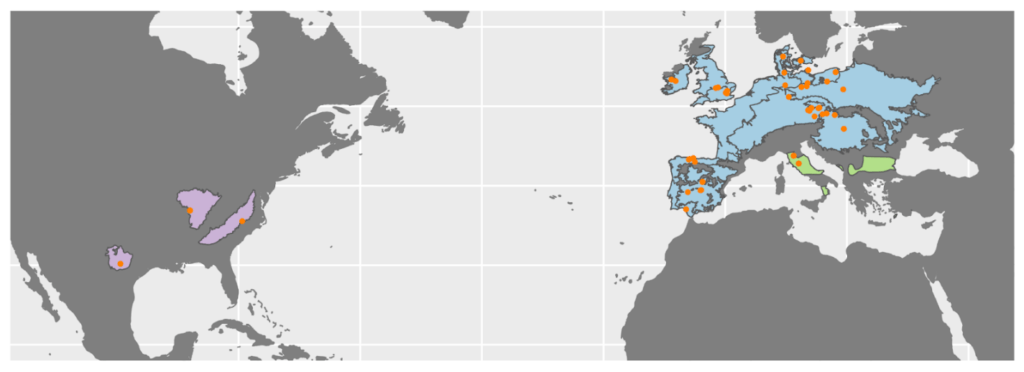Athens, Ga. – Accelerating climate change and human activity leads to new host-parasite interactions as rising temperatures and habitat loss push species beyond their native ranges. And as parasites interact with these novel host species, the risk of disease outbreaks increases, threatening global health and economic futures.
New research from the University of Georgia, published in Proceedings of the Royal Society B, identifies rules to help predict how these host-parasite relationships will be shaped by global change.
In a study exploring the nature of parasite acquisition, ecologists Annakate M. Schatz and Andrew W. Park pinpointed the traits in both host and parasite communities that are likely to be the strongest predictors of parasite acquisition.
“Previous research in this area has often analyzed parasite sharing in general or it’s been limited to case studies of relatively small geographic and taxonomic scales,” said Schatz, a Ph.D. student in the Odum School of Ecology and the paper’s lead author.
“Here, we consider multiple mammal species to get at broad rules. And by focusing on non-native hosts, we’re able to examine specific dynamics of parasite acquisition – that is, new associations formed in the non-native range,” Schatz said. “This has important implications for understanding parasite spillback, because the invasive species has to acquire a new parasite before it can influence transmission dynamics in other hosts.”
Schatz and senior author Park, an associate professor in the Odum School and the College of Veterinary Medicine department of infectious diseases, developed models to predict parasite acquisition, based on traits of both host and parasite communities outside their native ranges.
To conduct their analysis, they used the Global Mammal Parasite Database, pulling data from over 2700 publications about the host-parasite relationships in wild carnivores, ungulates, and primate hosts.

Their results span eleven host and 775 parasite species across three zoogeographic realms. They found that parasite prevalence, host phylogenetic compatibility, and the number of hosts per parasite serve as strong predictors of parasite acquisition.
Further, they found that parasite taxonomy interacts with these predictors, suggesting that parasite and host community traits cannot easily be disentangled.
To better understand parasite acquisition, they encouraged researchers to consider host-parasite community context.
“We also found some interesting patterns about parasite specialism and generalism,” said Schatz. “For example, we saw that certain bacteria were acquired despite higher phylogenetic distances between the invading host and the original host; we think this is because they tend to be more generalist than other parasite types. We also saw that parasite specificity interacted with phylogenetic relatedness between hosts. So basically, when hosts are more closely related, they’re more likely to acquire specialist parasites, but when they’re more distantly related, they’ll acquire generalists.”
Schatz and Park said that while the data they have generated contributes to knowledge on novel host-parasite communities, there is still more work to be done. Further studies will be needed to explore trends found by the models.
“Overall, our work shows that parasite acquisition is non-random and predictable. Importantly, our framework shows promise to be extended to other hosts, locations, and contexts not yet studied, so we hope this will be a starting point for further investigations of parasite acquisition,” said Schatz.
Support for the research was provided by the National Science Foundation.

